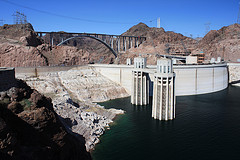 Hydroelectric power generation represents a prime application area for Falk couplings and gear drives. Due to the various torque and speed requirements, Falk drives can be essential elements in an efficient, long-lasting power generation system.
Hydroelectric power generation represents a prime application area for Falk couplings and gear drives. Due to the various torque and speed requirements, Falk drives can be essential elements in an efficient, long-lasting power generation system.
Hydroelectric power generation stations produce approximately 20 percent of the total electricity used in the world and 88 percent of the total renewable energy. Most of this power comes from very large power stations, but small (less than 10 MW) and micro-hydro (up to 100 kW) stations generate a significant amount of power worldwide and can be ideal for Falk drives and coupling systems.
How Hydro Power Systems Work
Efficient hydroelectric power generation requires proper functioning of all components of the system. Typical hydro power systems generate electricity through the following process:
- Conversion of the potential energy of the water stored in a reservoir into kinetic energy by sending water flowing down through the intake screens and penstock and into the turbine.
- Conversion of the kinetic energy of the water into mechanical shaft power in the turbine.
- Conversion of the shaft power at the output of the turbine into electrical energy in the generator run by the turbine. Lower-energy water then continues out into the drainage channel, which is typically a river or stream.
The Role of Falk Drives in Hydro Power Systems
The Falk drive system couples the turbine to the generator. It is at this point where proper matching of the turbine speed to the generator occurs. The turbine produces the most power at a speed dependent on available water flow, while the generator must run at the correct speed for the desired alternating current voltage and output frequency. Types of Falk couplings commonly used include the following:
- Direct drive. The ideal system uses a direct Falk coupling between the turbine and generator. This type of connection has minimum losses and therefore maximum efficiency, but it is only possible when conditions happen to provide the correct speed match.
- Belt drive. Belt and pulley systems allow for speed matching at lower cost.
- Gear drive. Gear drive systems provide speed matching while offering better efficiency and lifespan. Properly sized, they can also handle high power levels.
Falk drives are available in a variety of configurations – including inline and right-angle, shaft mount, flange mount or foot mount – for hydro power systems as well as other applications. A variety of Falk couplings are also available to handle high torque loads and high shaft misalignments.
[Photo by: David Herrera on Flickr via CC License]
Posted under Tips and Tricks on Thursday, September 15th, 2011
